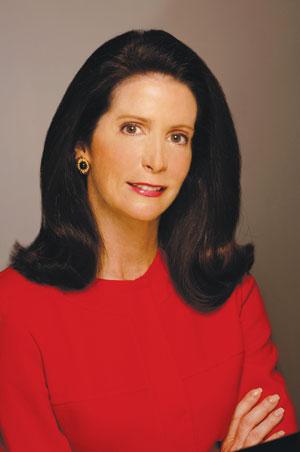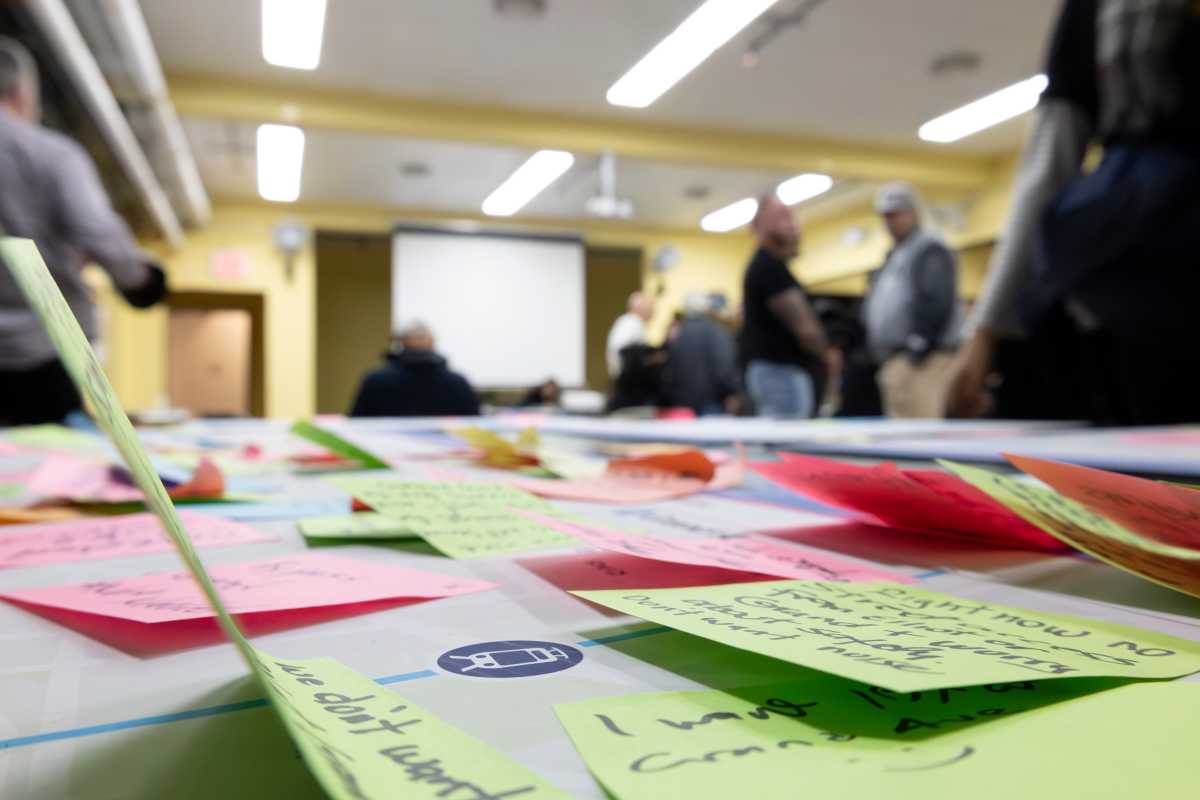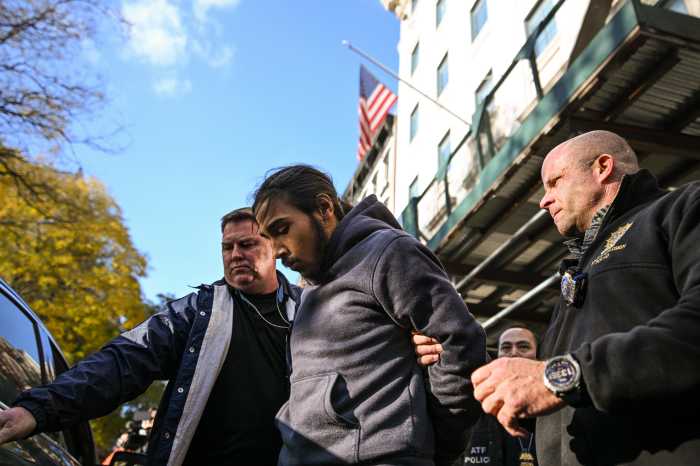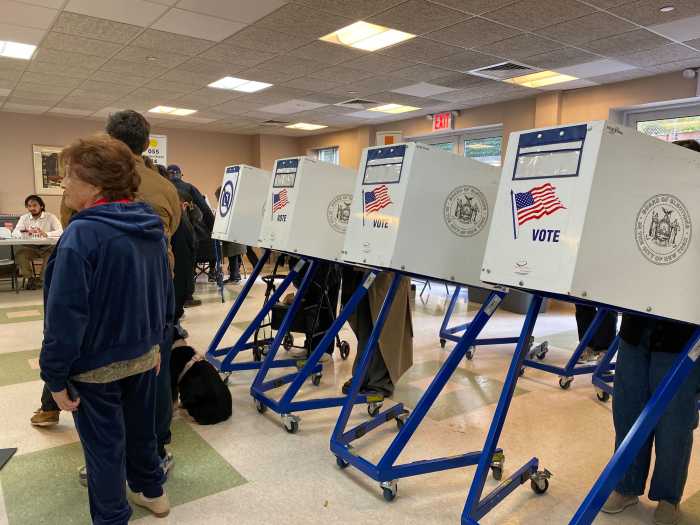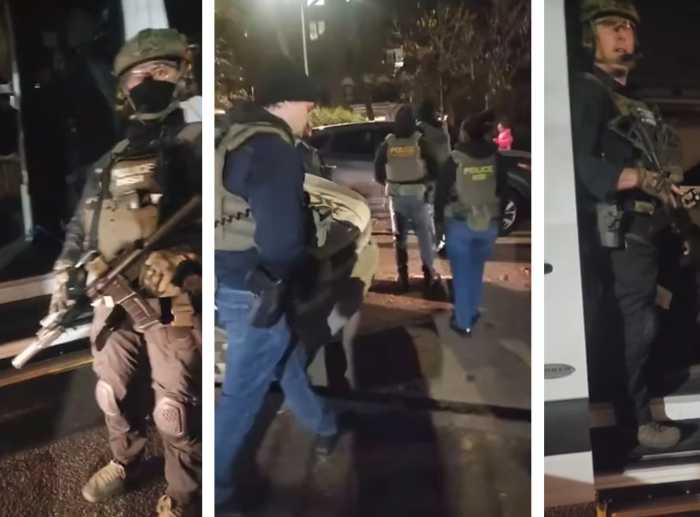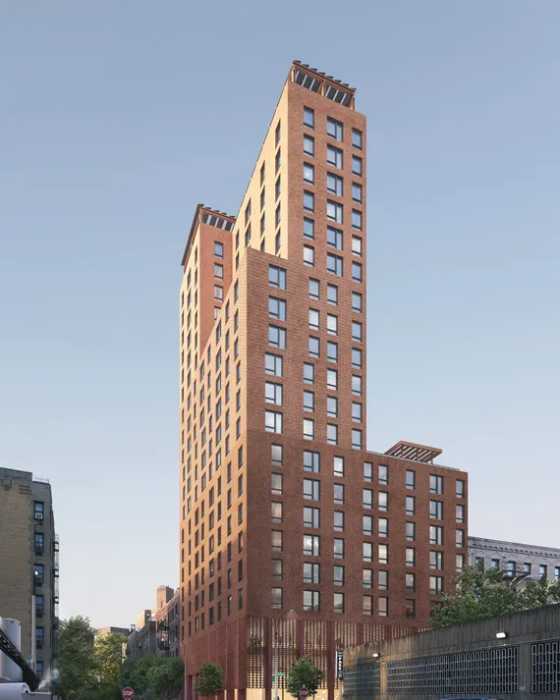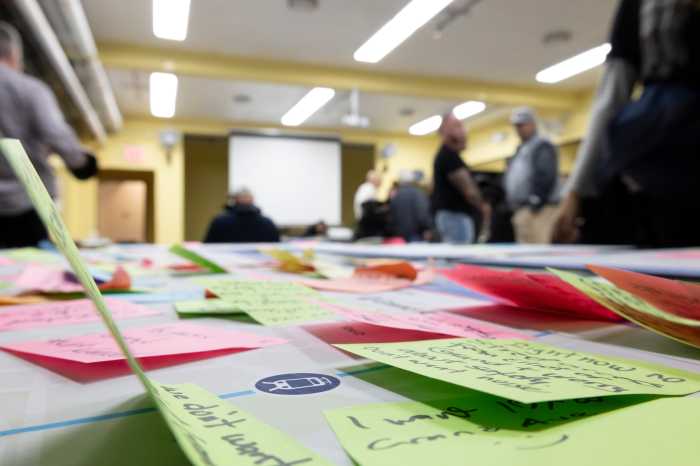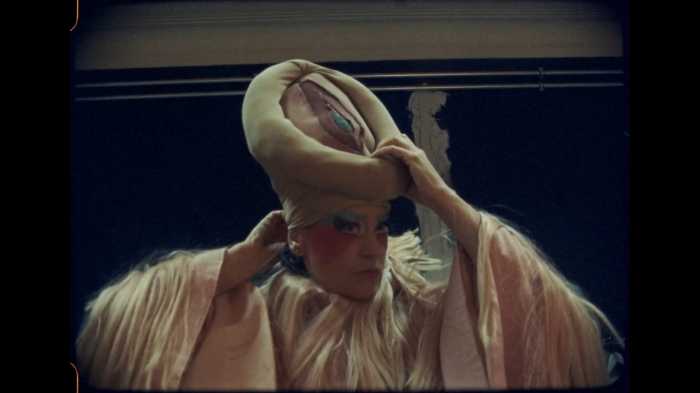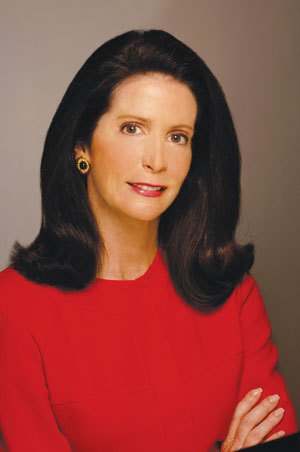 [/media-credit]
[/media-credit]
- Tara Stacom, chief leasing agent for 1 W.T.C.
BY ALINE REYNOLDS | Tara Stacom, vice chairperson of the global commercial real estate firm Cushman & Wakefield, and a member of the firm’s global advisory board, has taken on one of Lower Manhattan’s most eminent office leasing projects: 1 World Trade Center, formerly dubbed the “Freedom Tower.” In a Nov. 2 interview, Stacom remarked on the building’s current and prospective tenants in light of the economic downturn, the building’s distinguishing characteristics and day-to-day activity at the site.
DE: What is so appealing about 1 W.T.C., from the perspective of an office tenant?
It’s truly a chance for a company to get on a global stage. The tower is a global icon — it’s going to be the largest, tallest building in the Western Hemisphere. It’s only up to 86 stories in steel, yet it makes an extraordinary impression. For many companies I’ve represented, from the smallest to the largest, the letterhead address is very significant in assisting to transform their identity around the world. When Rockefeller Center was built, and tenants put on their letterhead, “Rockafeller Plaza,” they got instant recognition. The W.T.C. site will do that in a far greater way, because it’s more iconic, it’s more discussed and talked about, and it’s architecturally renowned.
DE: Talk about the tenants you’ve secured thus far.
The first tenant which signed is Vantone, for about 190,000 square feet on floors 64 to 69. The second is Conde Nast, which took just over one million feet on floors 20 to 41.
DE: What kind of company is Vantone?
It’s actually a division of Vantone called China Center New York, a Chinese entity that houses companies from China coming to the U.S. to do business. It’s going to be a terrific asset for the bluilding. It’s owned by a renowned individual in China who hired a renowned architect to construct an extraordinary premises that the other tenants will benefit from, including a conference space and a club facility.
DE: How do you think Conde Nast’s lease-signing is continuing to influence the office market in 1 W.T.C. and Downtown in general?
Conde Nast is a global brand with cache. For many tenants in New York City, it shined a light on a Downtown that was thought to be solely for financial services and investment banking, which it has been for quite some time. Everyone jokes and smiles when saying how the young Goldman Sachs guys will wonderfully mix with the Conde Nast employees.
DE: In sealing new leases, are you targeting specific types of business or industries?
Yes, in that we’re looking at getting a very diverse roster within the building — not just from a size perspective but from an industry category perspective, and from a geographic perspective. We are [searching] for further international presence as we get closer to renting. We’re also looking for diversity [in size] and are ready to lease smaller spaces than your million-square-foot tenants — like one-to-two floors — so that we have a truly diverse, global building in every respect. We do have serious prospects currently from the Downtown community, and we want to attract other Midtown tenants, of course.
DE: Are there any other office tenants you’ve lined up that we don’t know about yet?
Conde was unusually out of the box early! There are more than a dozen that we’re tracking, including a creative firm and a law firm. Their brokers would prefer that I not mention their names. There are millions of feet of potential there — we have been touring actively and are having active dialogue with very large users as well as two-floor users.
DE: Describe these tours to prospective tenants. How long do they typically take?
We can tour anywhere from four to six prospects in a week. What’s interesting in touring 1 W.T.C. is that, unlike a normal building, where a tour will last 35-to-45 minutes, a tour can last easily three hours; because it’s a sixteen acre site with so much to understand, whether it’s the Calatrava train station, the 9/11 Memorial Museum, the Vehicle Security Center, the other buildings being constructed on the site, and retail and connectivity down below. People really want to understand how it all relates to one another. They’re not just leasing in one building, they’re leasing into a new environment that’s all connected.
DE: So, what asking rent have you set for 1 W.T.C.?
It’s now at $75 per [square] foot — up to the 64th floor Sky Lobby, a double-height floor with a large atrium, where you’ll be able to transfer to two elevator banks that service floors 65 to 90, the highest floor. We’ve only priced an asking rent below the Sky Lobby. When you deliver a building, you’ll deliver it from the bottom up — therefore the leasing prospects will follow in that way.
DE: How is Tower 1 faring at the moment, in terms of leasing activity?
The 9/11 Memorial opening created a very interesting dynamic of [newly interested companies] considering 1 W.T.C. The tower is new, and obviously green and attractive, financially, which is driving their interest — because companies today want to change their culture. With a new environment at 1 W.T.C., companies who are challenged today with their balance sheet and trying to find ways to increase revenue and reduce expenses, [can] occupy space much more efficiently than in any of the older [building] stock.
DE: But, how ready and willing are the companies to shake hands and sign a lease?
Now, with the economic uncertainties and with what’s happening in Europe, people are not as quick to make decisions. In times like this, obviously, the dialogue can potentially be longer than we would have had in the earlier part of this year, since times were more certain earlier this year.
DE: Does that make your job tougher?
Yes, I suppose. But we don’t feel it the same way the older [building] stock does. Selling this building is easier than selling some of the city’s older buildings I represent, because [prospective tenants] realize there’s very little of this product and this supply in the time frame many of these companies are currently seeking space in. Presently, there is 400 million square feet worth of office space in Manhattan and, in 2014-15, only three new office buildings [are scheduled to come on line], including 1 W.T.C. and 4 W.T.C.
DE: Do you fret a potential double-dip recession will make prospective tenants hesitate even more?
Yes, it concerns me. But because of its unique attributes, 1 W.T.C. will fare far better than much of the older stock in Manhattan. The last time we dipped out of a recession, we came back very quickly and very strong. I expect the same will happen — because again, the lack of supply, really, will create the speed with which this market will recover when we come out.
DE: When do you expect to set a price for the top half of the building?
That’s a good question. I was on the phone this morning with [tenant] prospects interested in space above the Sky Lobby. When queried, we said, ‘we don’t have an asking rent, but we’re going to line up the tours.’ If someone insists on us considering their renting above those floors, we’ll negotiate, obviously. But right now, unless calls come into us, we’re focusing on the floors down below.
DE: What is your projected time frame of the leasing of Tower 1?
We’re hopeful we’ll be announcing, maybe by the first quarter next year — a good three years before we open — that we’ll be 50 percent rented. Nobody would have believed me if I had said that three or four years ago. It would obviously be quite a feat and quite an accomplishment, since it is a very large building.
DE: How much of One W.T.C., if any, will be used for community and cultural purposes, do you think?
It’s a little too early in the leasing stage, I think, for that dialogue to occur. Those entities would take smaller amounts of space, and that leasing would take place in 2015. The Durst Organization, the tower’s developer and co-leasing and marketing agent, is very involved in arts organizations and cultural aspects of New York City — having been a very big, early supporter of The High Line. I could easily see Durst considering utilizing vacant floors that aren’t rented [for that purpose].
DE: From a personal standpoint, what’s it like to work on such a nationally and internationally recognized project?
When I took this project on in 2007, I believed in it. I was very, very bullish. I’m charged and energized and renewed anytime I go down there.
DE: Describe a recent day at the site.
It’s humbling to talk with the construction workers. Two days ago, I was in an elevator with a steel worker who is leading the Irish group, and talked to him about his job. In some way, I’m standing next to him and [it occurred to me that] I’m leasing it, but he’s building it — which is so much more meaningful, in many respects. The workers ares all so proud, as am, I to be associated with this building. There’s nothing more magnificent than I’ve ever been involved in, or probably ever will be, as this asset is to this city and this country.



